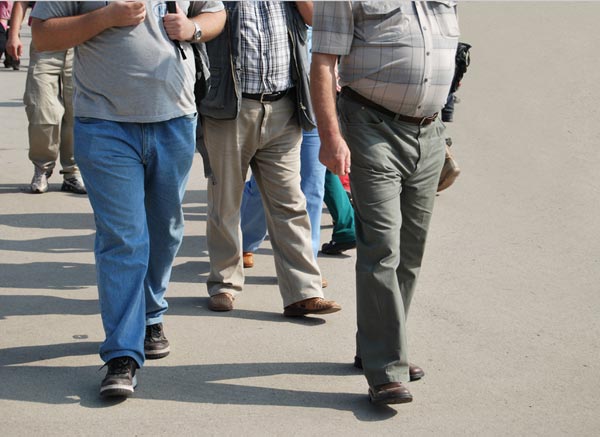New 'Obesity Genes' Found

Scientists have identified 18 new genetic markers that may play a role in obesity, and 13 new markers that may help determine whether fat accumulates on the waist or the hips, according to two new studies.
Many of these markers are in or near genes that have not previously been connected to obesity . In fact, the scientists do not know what many of these genes do.
"One of the things it tells us is that we really don't know that much about the underlying causes that influences these conditions," said Dr. Elizabeth Speliotes, of the Massachusetts General Hospital and the Broad Institute, who worked on both studies.
Learning what these genes do may help scientist categorize obese people based on the causes of their condition. "We hope to use this information in the future to better sub-classify obesity and hopefully develop better treatments for those subclasses of obesity," Speliotes said.
The studies were published online Oct. 10 in the journal Nature Genetics.
Obesity genetics
In one study, Speliotes and her colleagues analyzed 46 previous studies involving nearly 124,000 people. They identified 42 markers associated with body mass index, or BMI, an indicator of body fatness. Follow-up tests in a larger population narrowed these markers down to 18 new ones.
Get the world’s most fascinating discoveries delivered straight to your inbox.
One of these markers is in a gene that affects appetite regulation. Another influences the body's levels of insulin the hormone that allows cells to take up sugar, or glucose.
Because people have two copies of every gene one from their mom and one from their dad it's possible to have up to 64 of these genetic markers (double the 32 identified markers.) People with more than 38 of these markers were, on average, 15 to 20 pounds heavier than those with fewer than 22, the researchers found.
However, the markers were still only slightly better than chance at predicting who would be obese. This is likely because other yet-to-be-identified genetic markers , as well as environmental factors such as diet and exercise , also influence obesity.
"As we discover more and more of these [markers] we will get a better and better prediction of at least your genetic predisposition to obesity, but it's probably never going to be as absolute as people might want to know," Speliotes said. "Its disappointing to some but it's also encouraging to others in that you can influence your ultimate destiny through environmental changes," she said.
Belly fat vs. hip fat
The second study examined information from 32 studies with a total of about 77,000 participants. The researchers identified 13 new markers associated with waist-to-hip ratio, and the findings suggest these markers play a bigger role in women than they do in men, the researchers said.
Storing fat in the abdomen appears to be worse than storing fat in the hips, thighs and buttocks , the researchers said. Belly fat , or visceral fat, is associated with an increased risk of type 2 diabetes and heart disease.
Future research into these genes may help scientists intervene in the pathways that determine where fat is stored, the researchers said. Hypothetically, therapies might be able to prevent fat from being stored in "bad" areas, such as the abdomen, and promote storage in the "good" areas around the hips.
Together, these studies were conducted by more than 400 scientists from 280 research institutions around the world.

Rachael is a Live Science contributor, and was a former channel editor and senior writer for Live Science between 2010 and 2022. She has a master's degree in journalism from New York University's Science, Health and Environmental Reporting Program. She also holds a B.S. in molecular biology and an M.S. in biology from the University of California, San Diego. Her work has appeared in Scienceline, The Washington Post and Scientific American.


